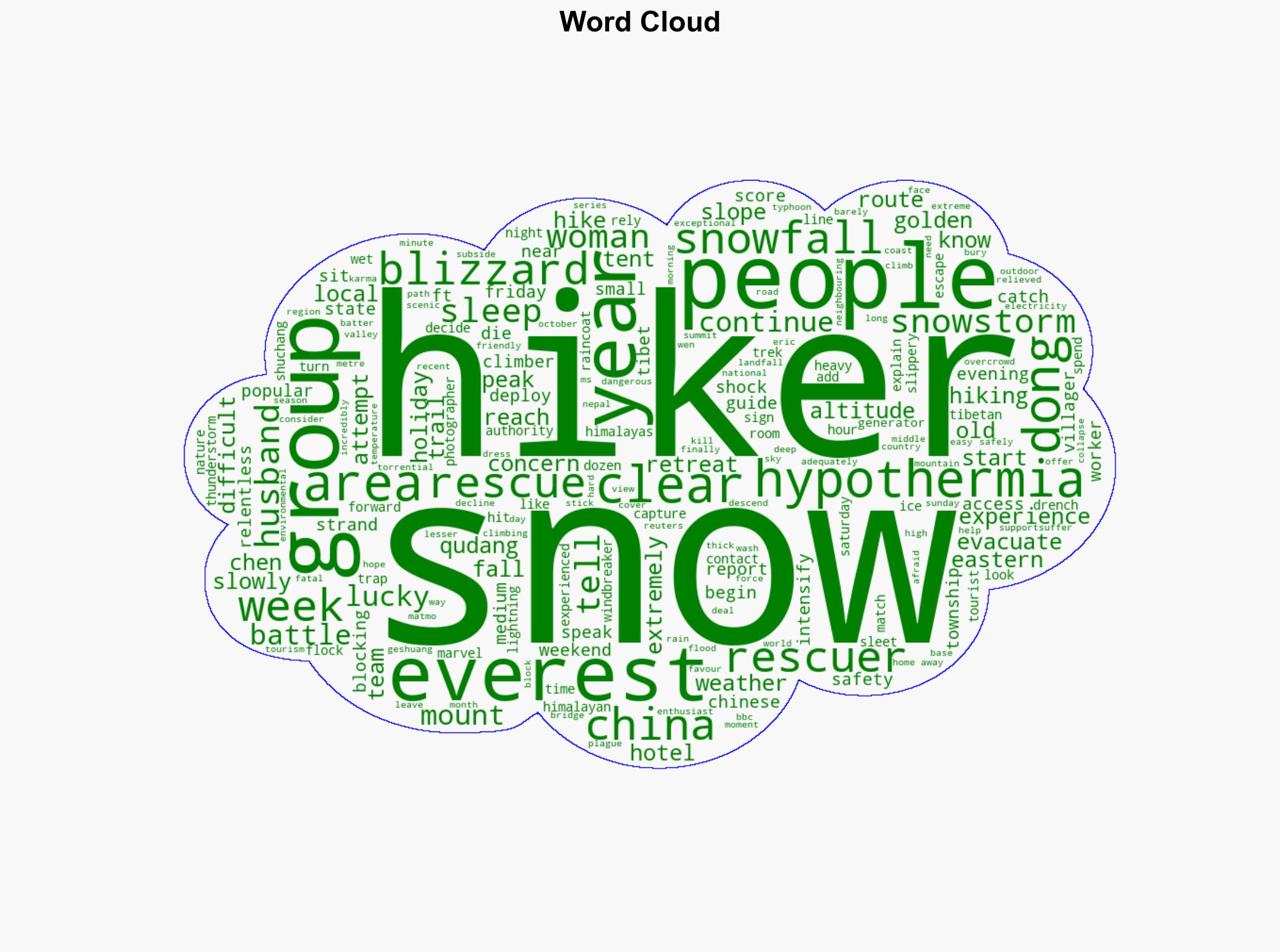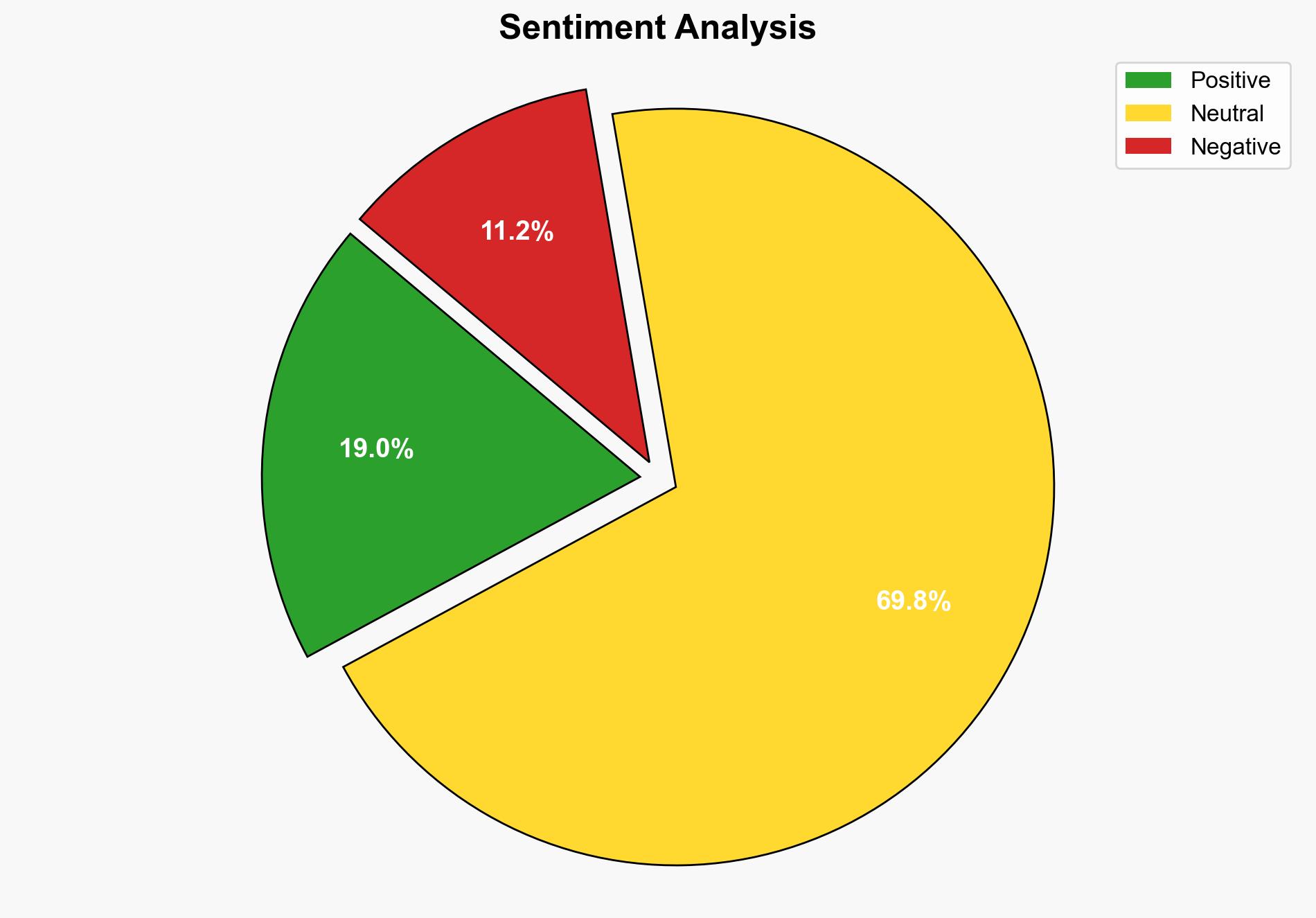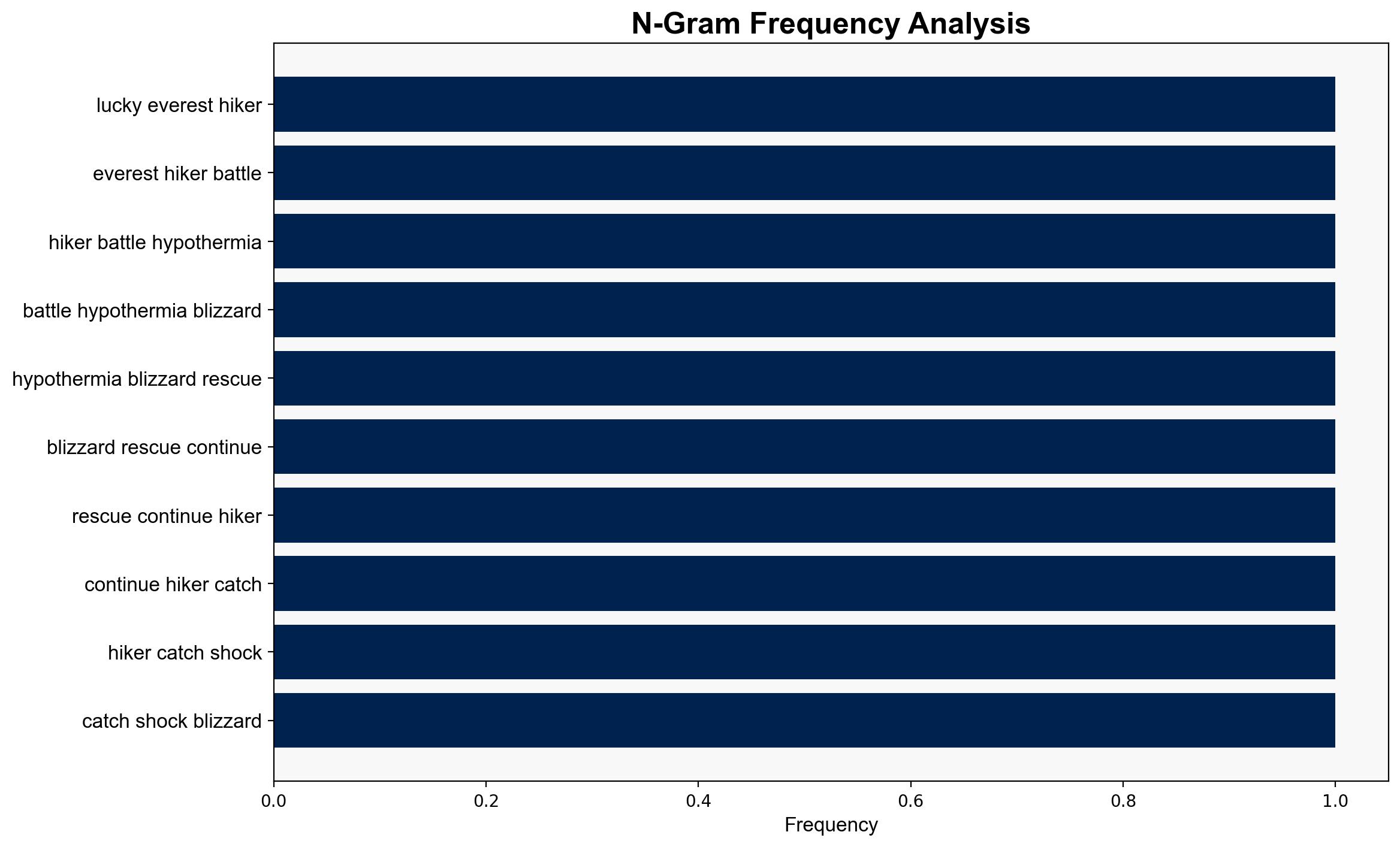Nearly 1000 people trapped on Mount Everest slopes – BBC News
Published on: 2025-10-05
Intelligence Report: Nearly 1000 people trapped on Mount Everest slopes – BBC News
1. BLUF (Bottom Line Up Front)
The most supported hypothesis is that the severe weather conditions were underestimated by hikers and local authorities, leading to inadequate preparation and response. Confidence level: Moderate. Recommended action: Enhance weather forecasting and communication systems for remote areas, and improve emergency response protocols for natural disasters in high-altitude regions.
2. Competing Hypotheses
1. **Hypothesis A**: The unexpected severity of the blizzard caught hikers and authorities off guard, leading to the entrapment of nearly 1000 people. This scenario suggests a failure in weather prediction and communication.
2. **Hypothesis B**: The entrapment was exacerbated by the overcrowding due to the Golden Week holiday, which overwhelmed local resources and emergency response capabilities.
Using ACH 2.0, Hypothesis A is better supported by the evidence of severe weather conditions and the reported lack of adequate preparation by hikers. Hypothesis B is plausible but less supported due to the absence of direct evidence linking overcrowding to the entrapment.
3. Key Assumptions and Red Flags
– **Assumptions**: It is assumed that weather forecasts were available but not effectively communicated or acted upon. Another assumption is that local authorities have standard emergency protocols in place.
– **Red Flags**: The lack of detailed information on the coordination between local authorities and rescue teams is a potential blind spot. Additionally, the reliance on anecdotal evidence from hikers may introduce bias.
4. Implications and Strategic Risks
The incident highlights the vulnerability of popular tourist destinations to extreme weather events, which could deter future tourism and impact local economies. There is a risk of reputational damage to the region if perceived as unsafe. Additionally, the event underscores the need for robust disaster preparedness in remote areas, which could have broader implications for national emergency management strategies.
5. Recommendations and Outlook
- Enhance weather forecasting capabilities and ensure timely dissemination of information to hikers and local authorities.
- Develop and implement comprehensive emergency response plans tailored to high-altitude and remote regions.
- Scenario Projections:
- Best Case: Improved systems lead to better preparedness and reduced risk of future incidents.
- Worst Case: Continued inadequate response results in loss of life and significant economic impact.
- Most Likely: Incremental improvements in response capabilities and communication reduce future risks.
6. Key Individuals and Entities
– Dong Shuchang: Nature photographer and hiker.
– Chen Geshuang: Member of Dong’s hiking group.
– Eric Wen: Hiker who reported on the conditions.
7. Thematic Tags
natural disaster response, emergency management, tourism safety, weather forecasting, regional preparedness




